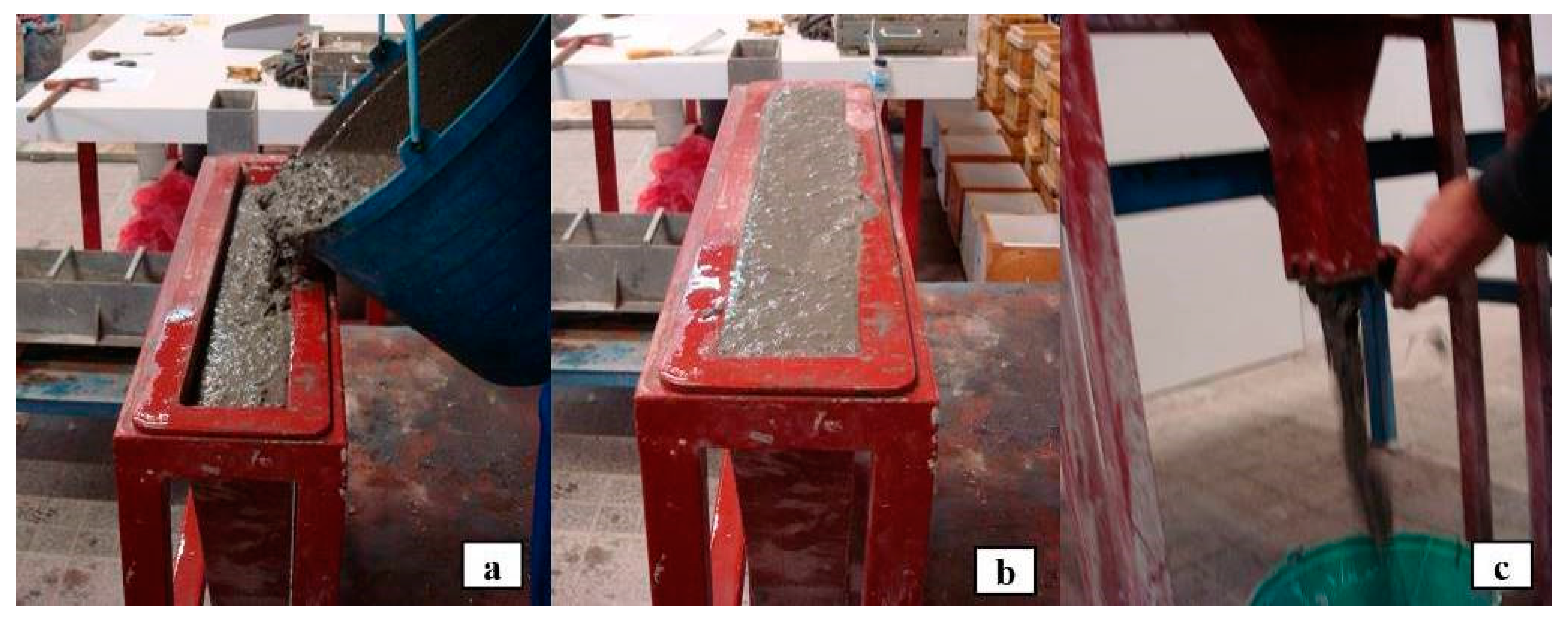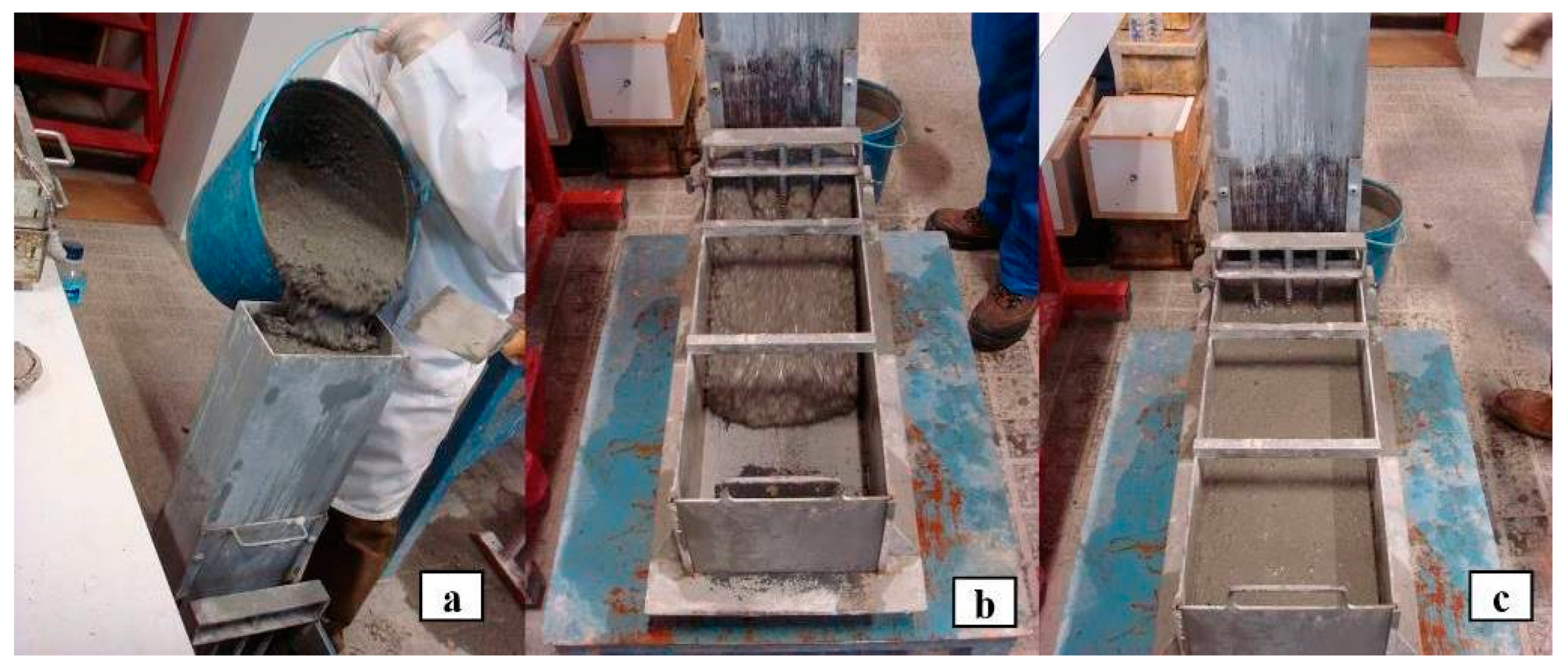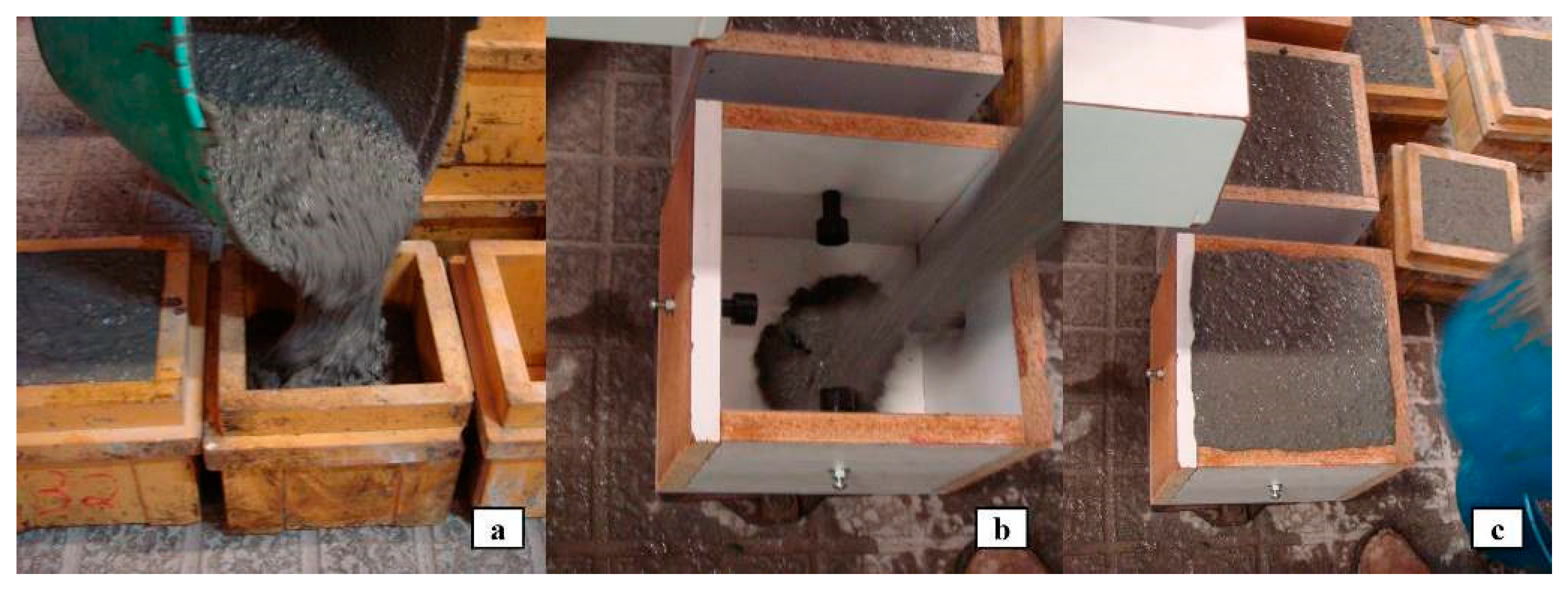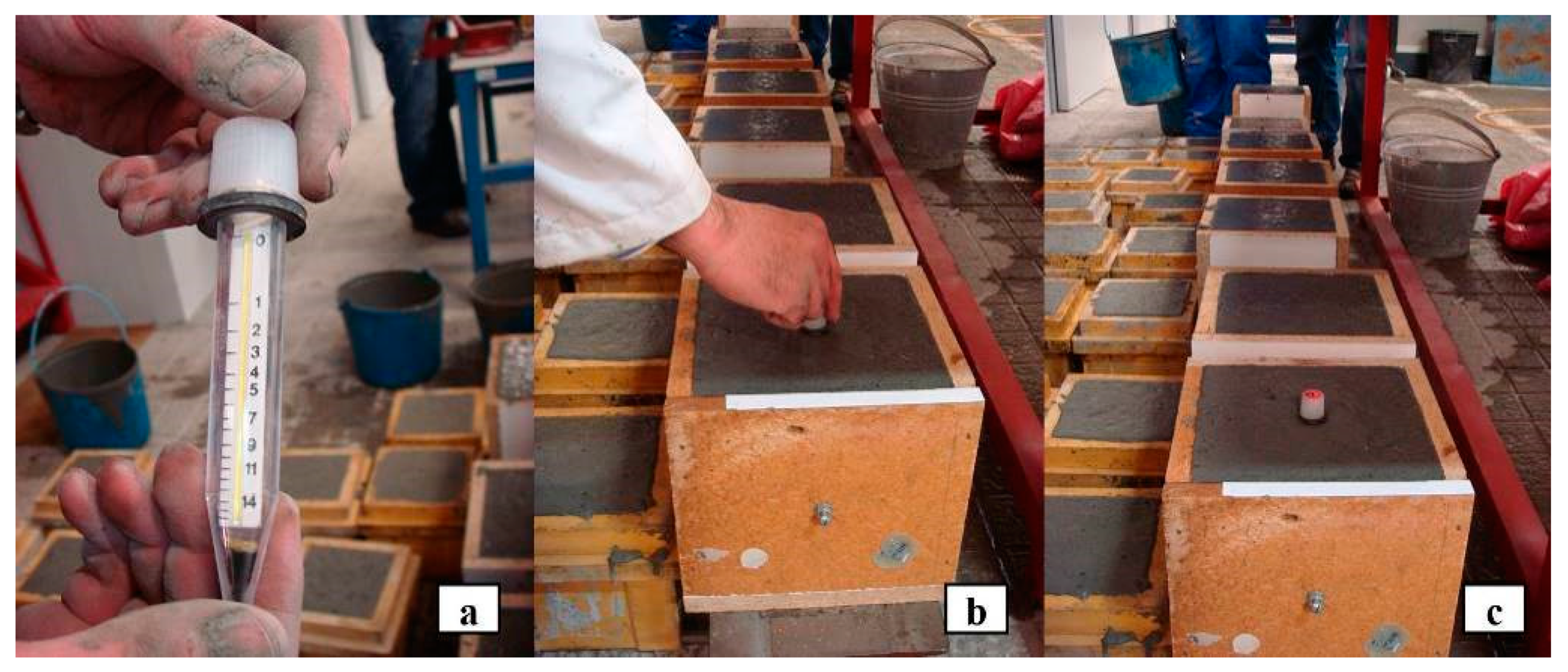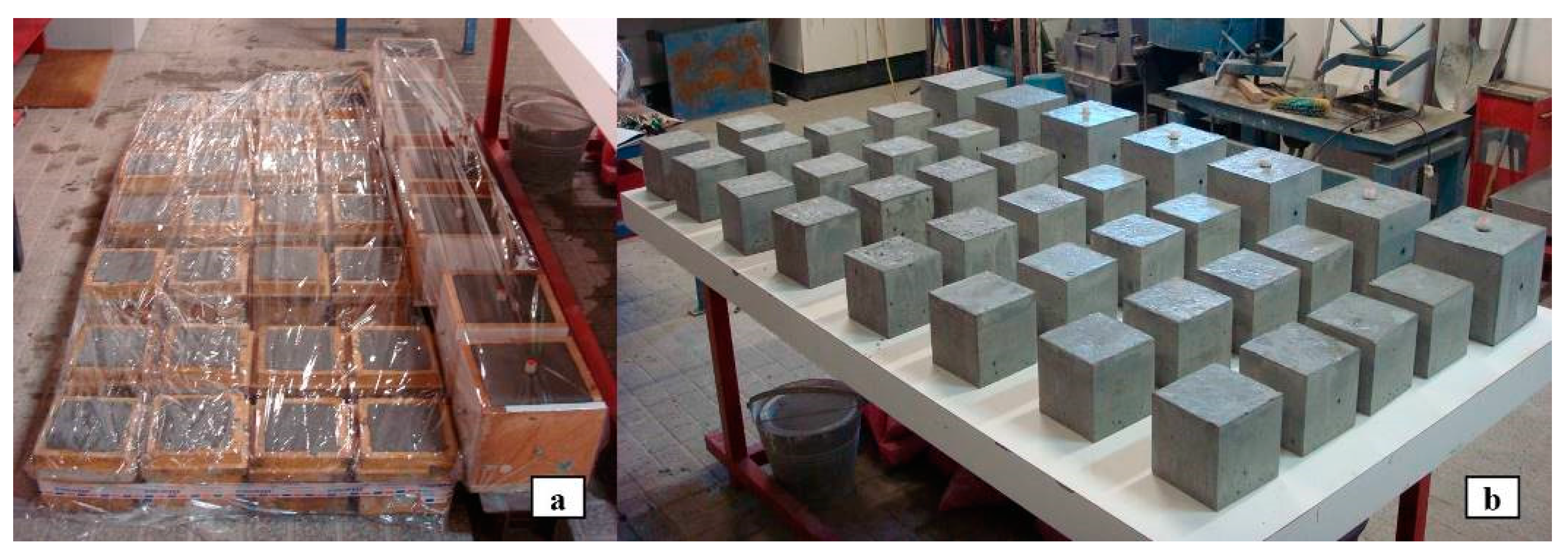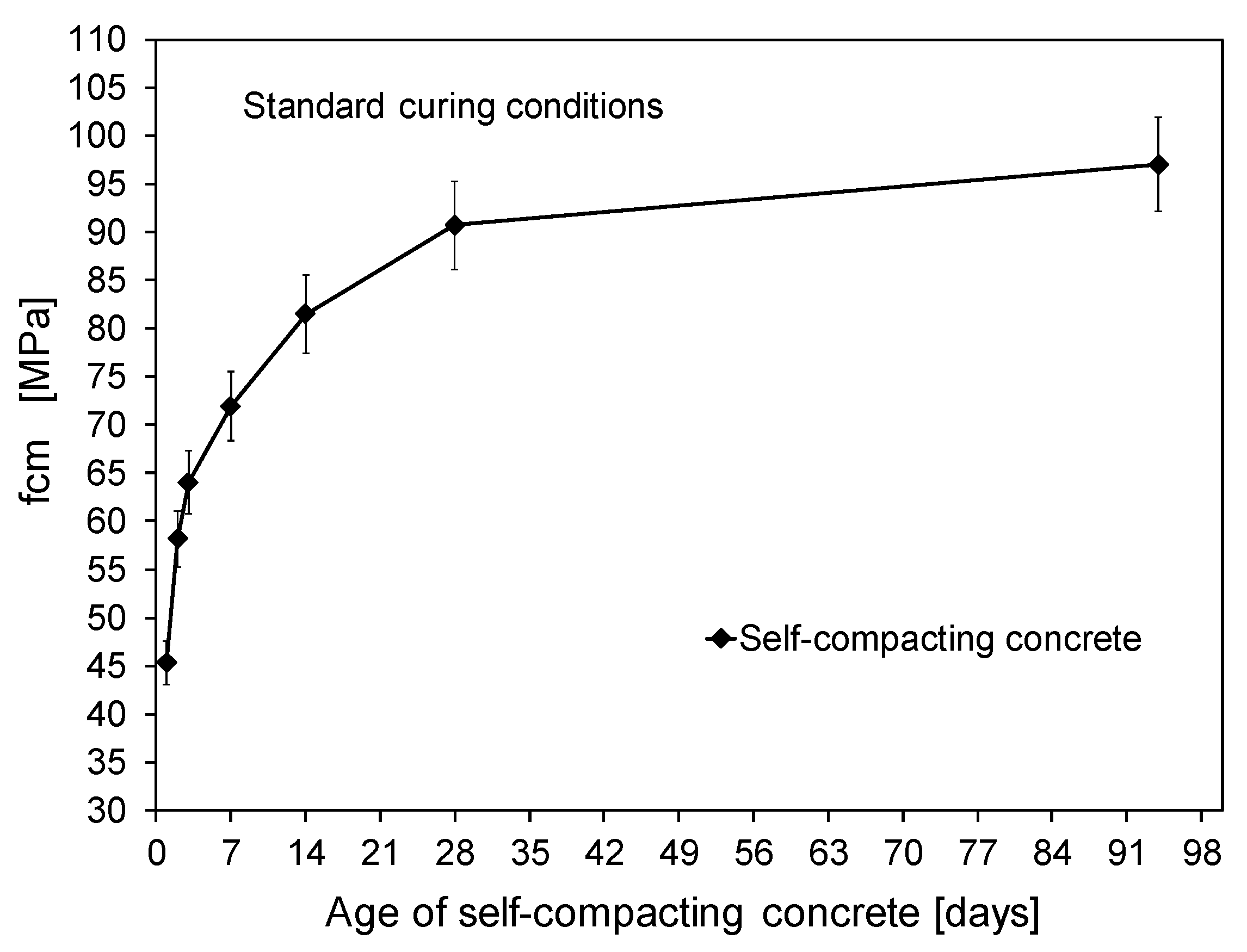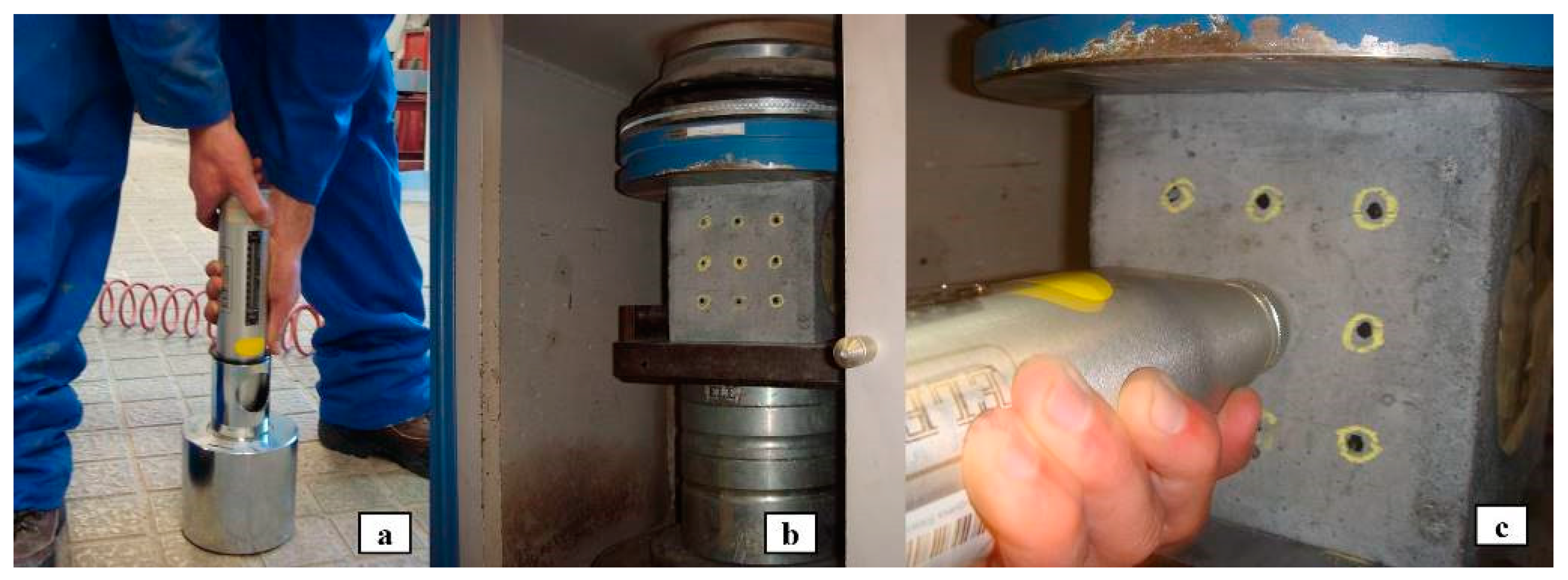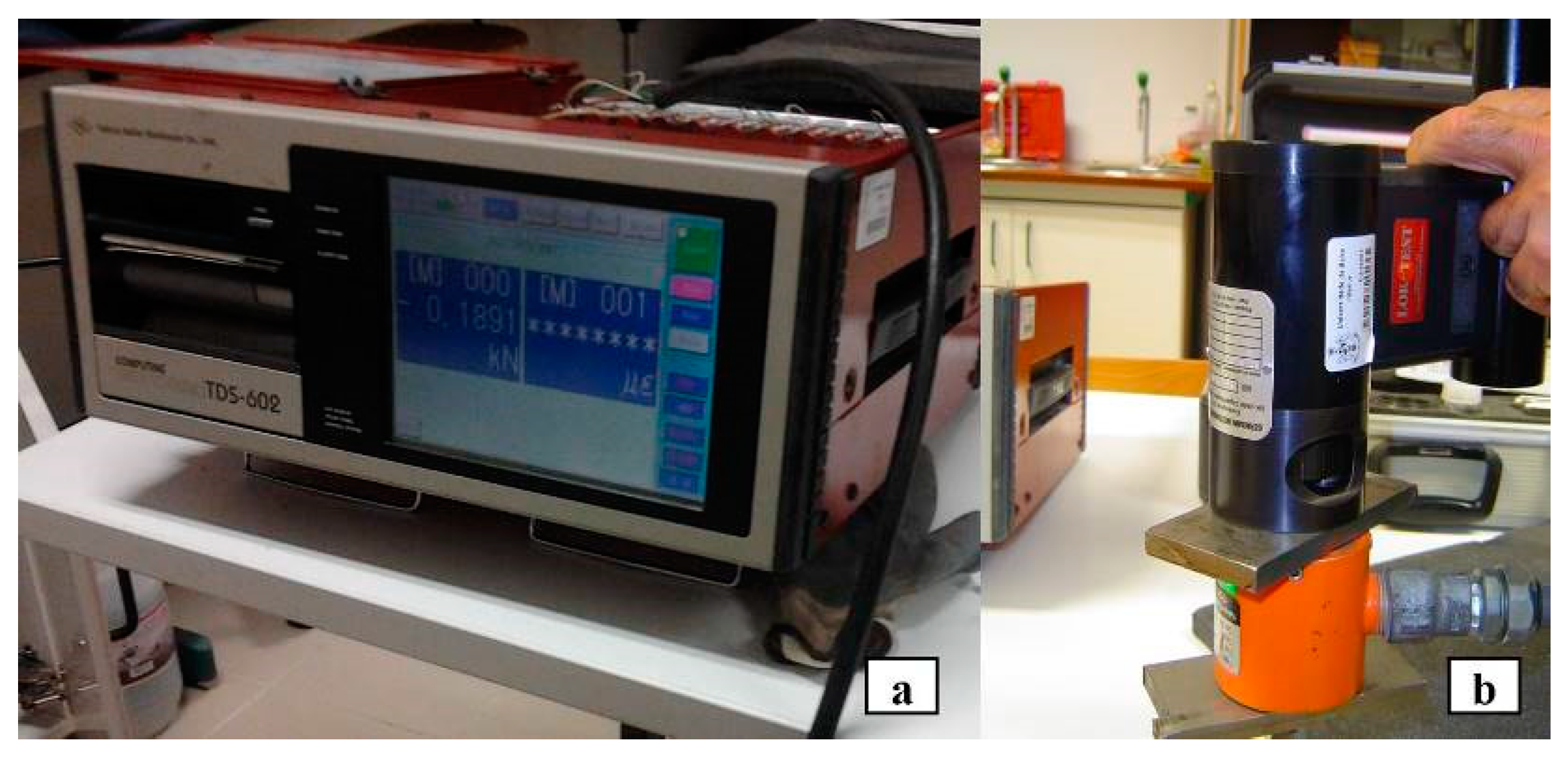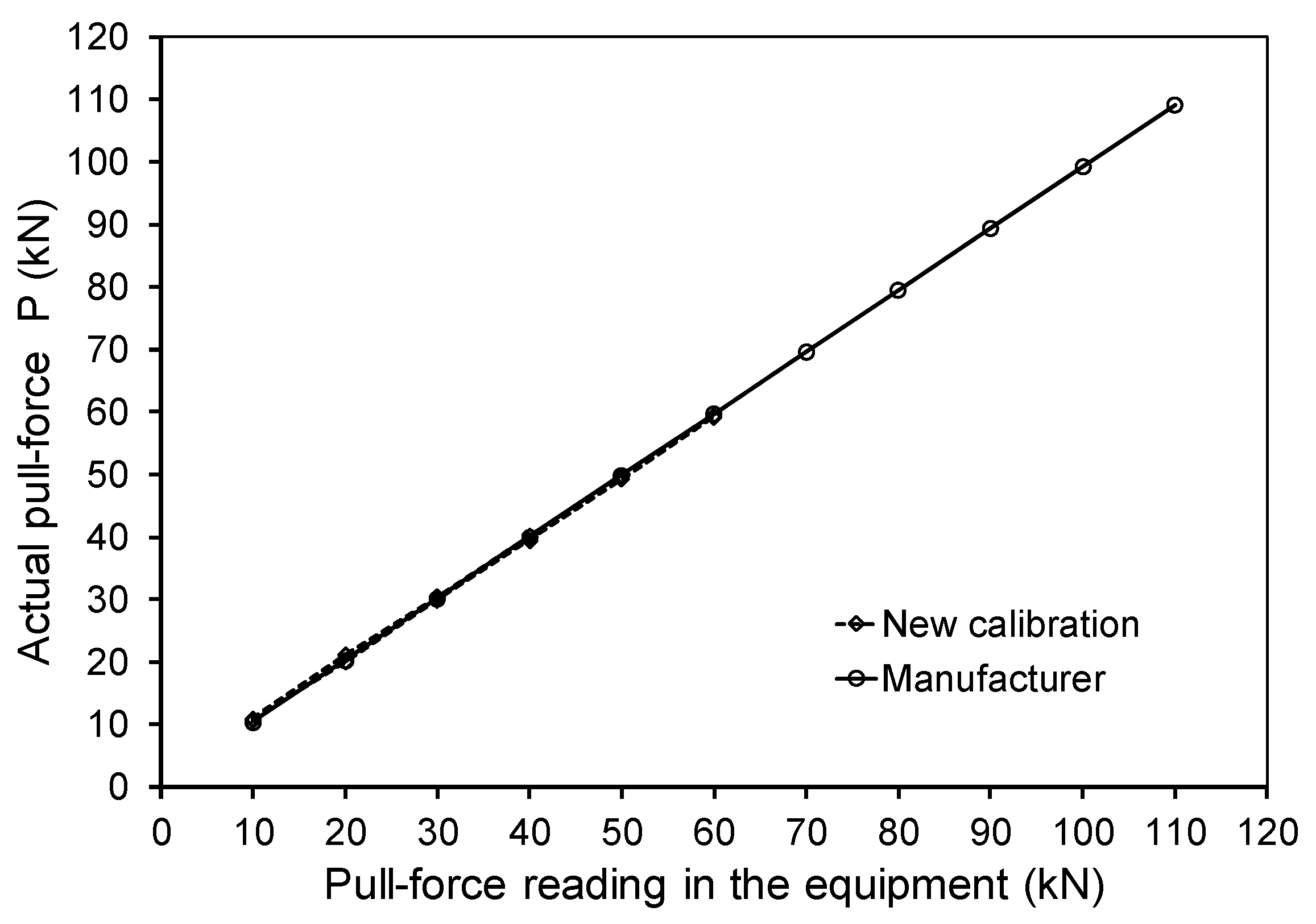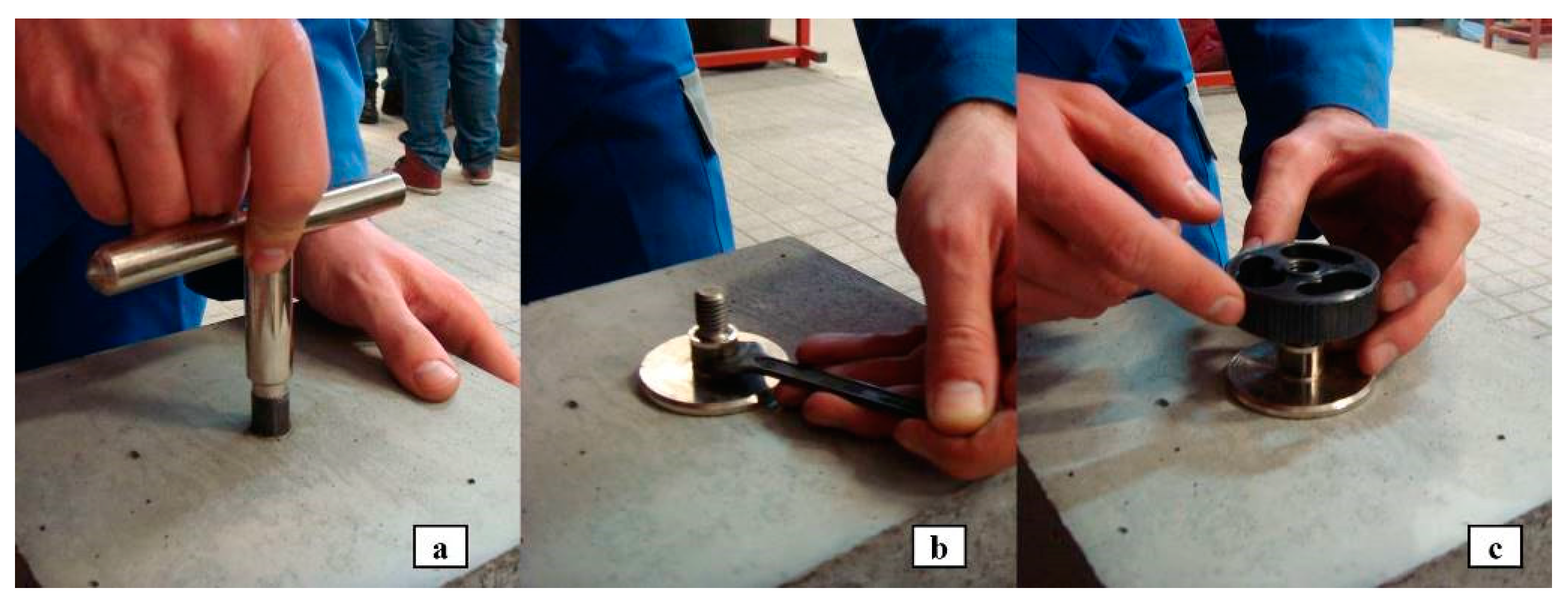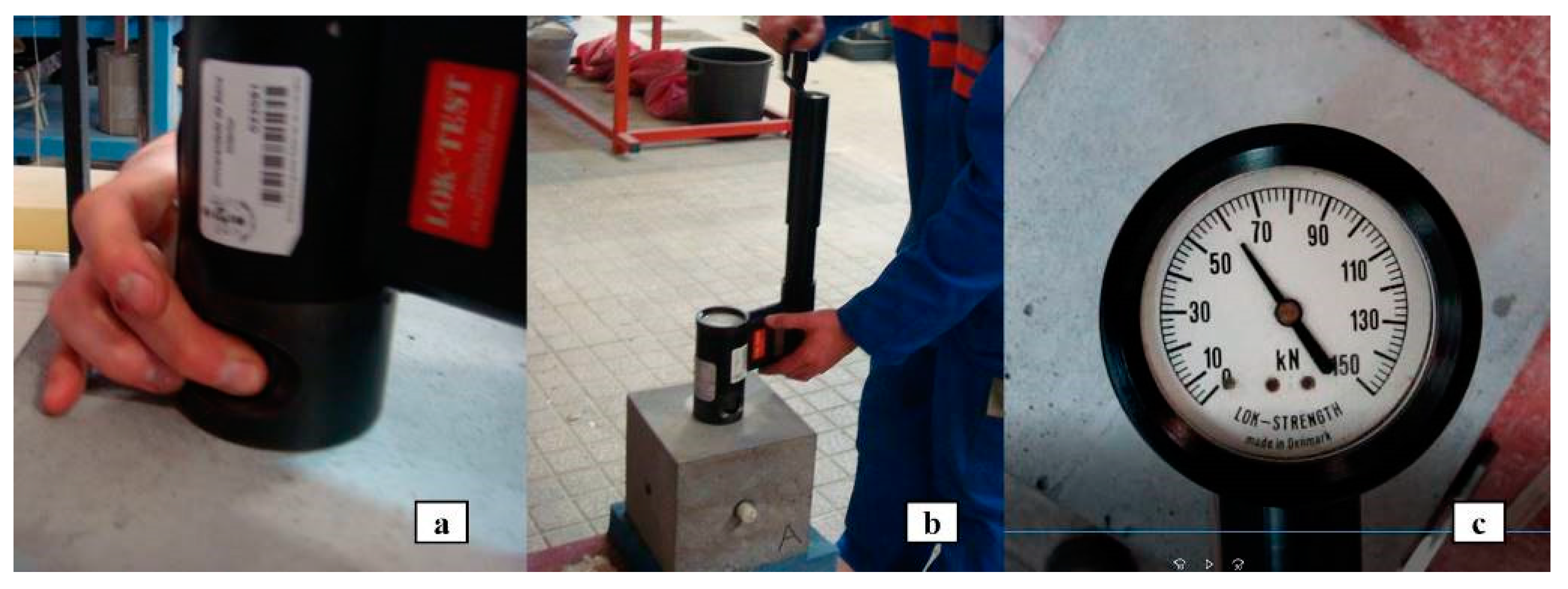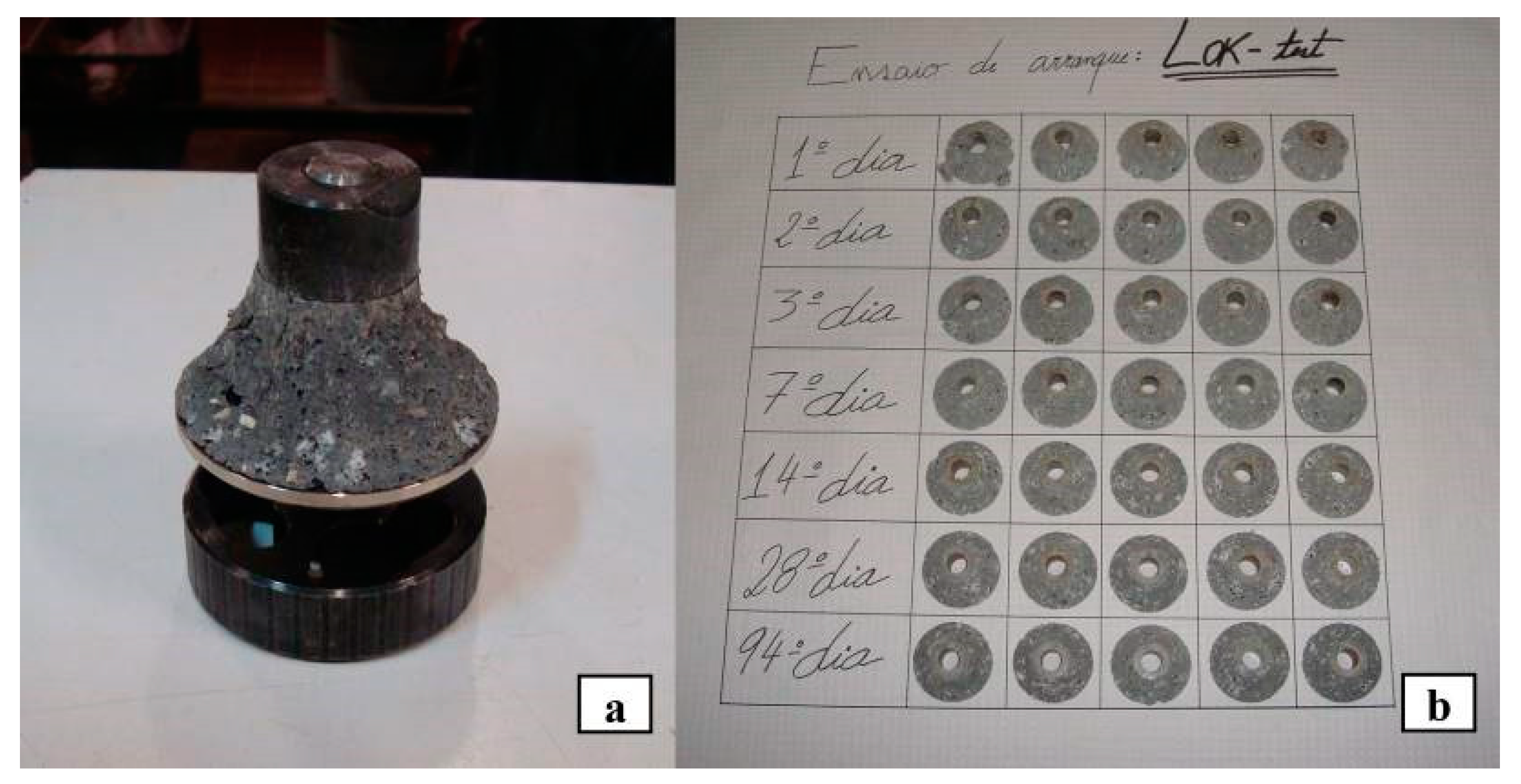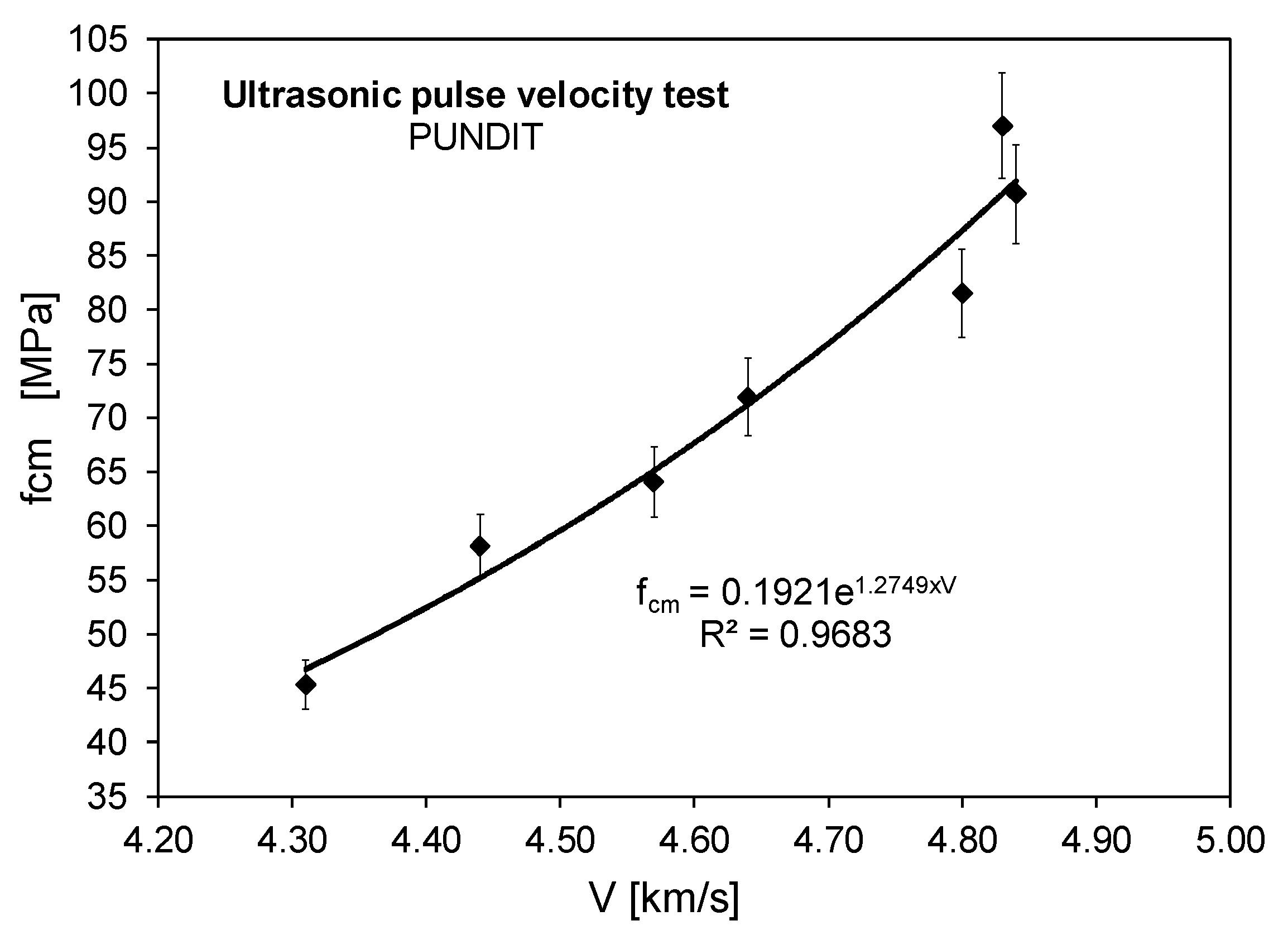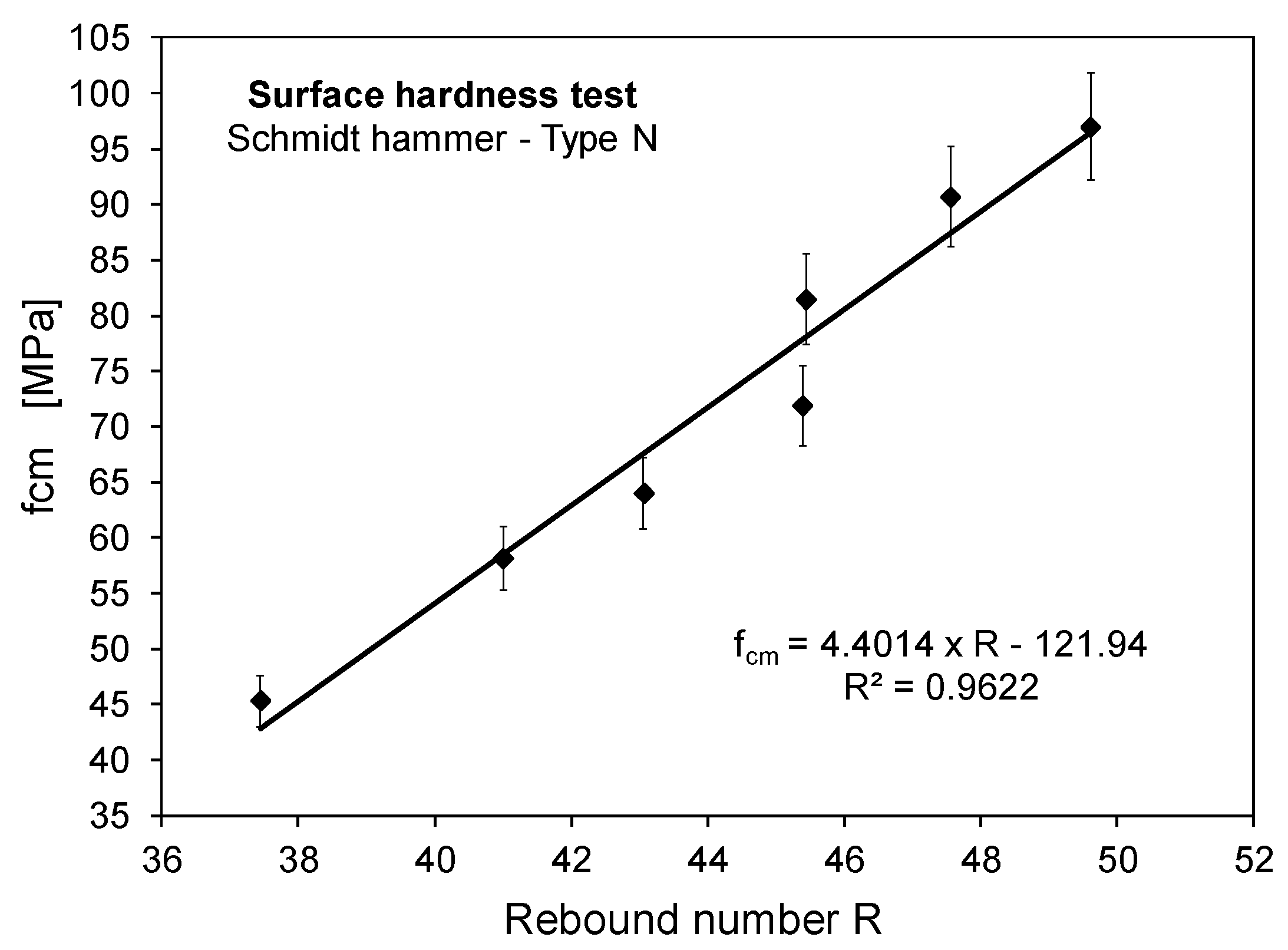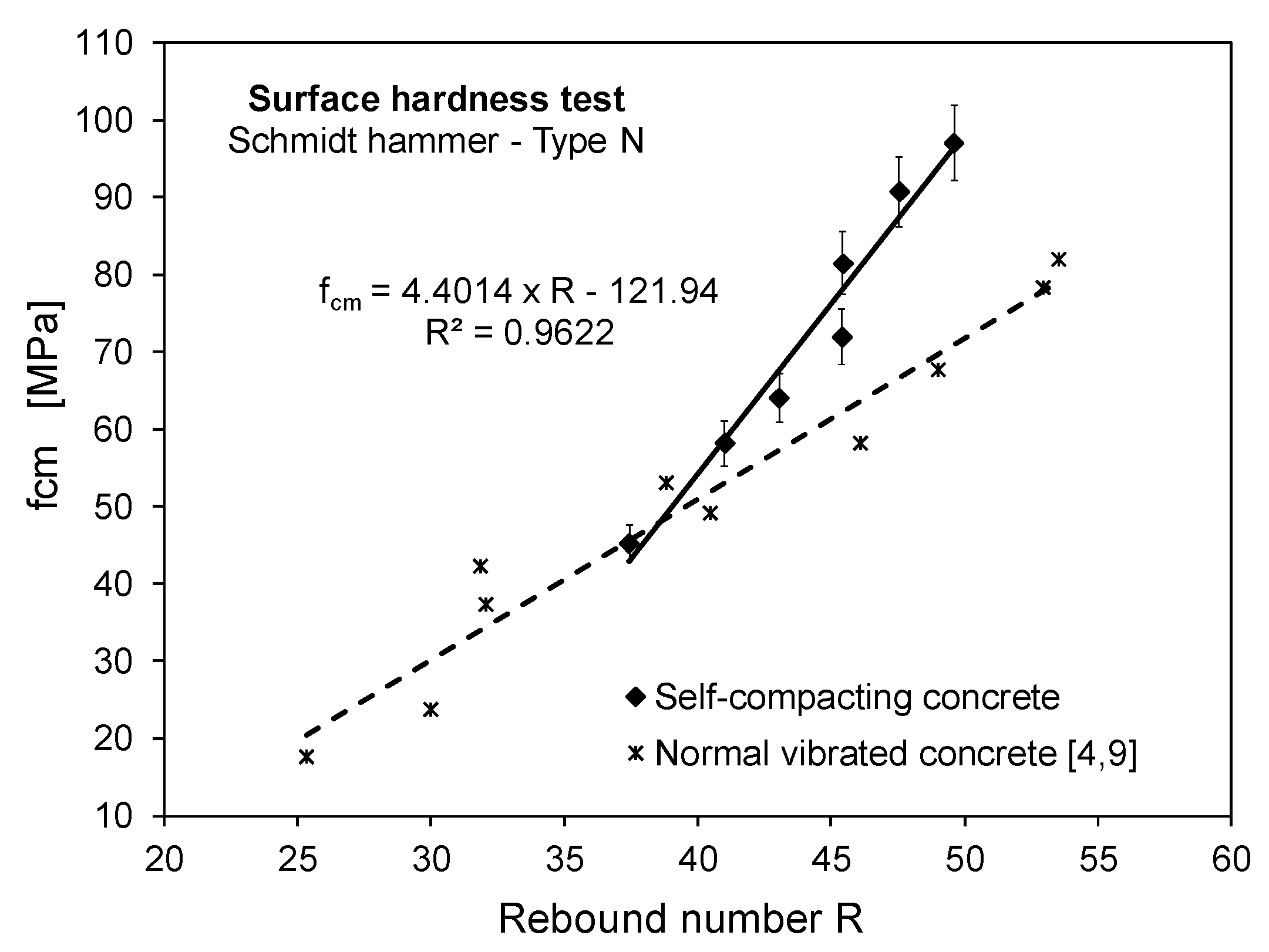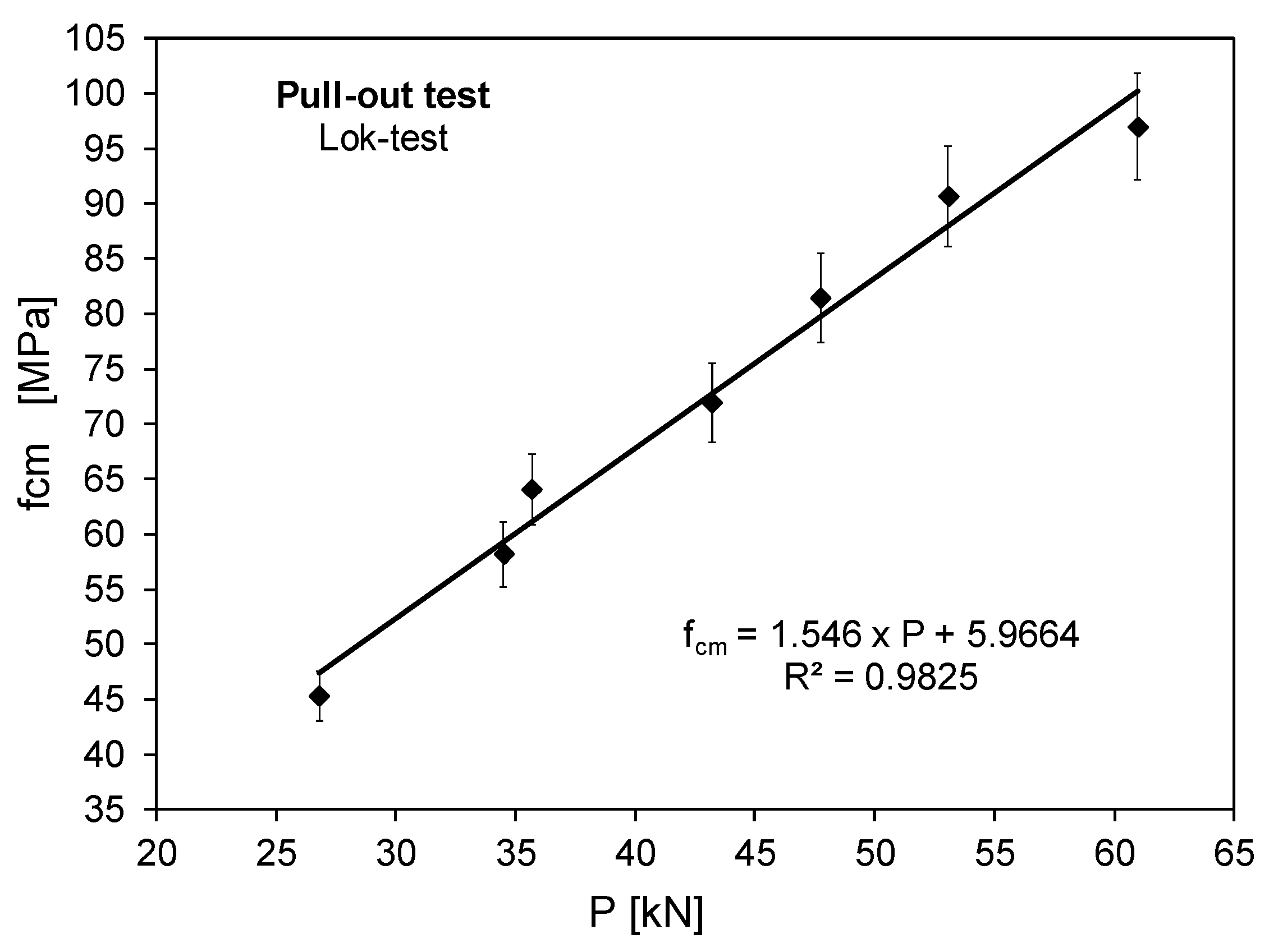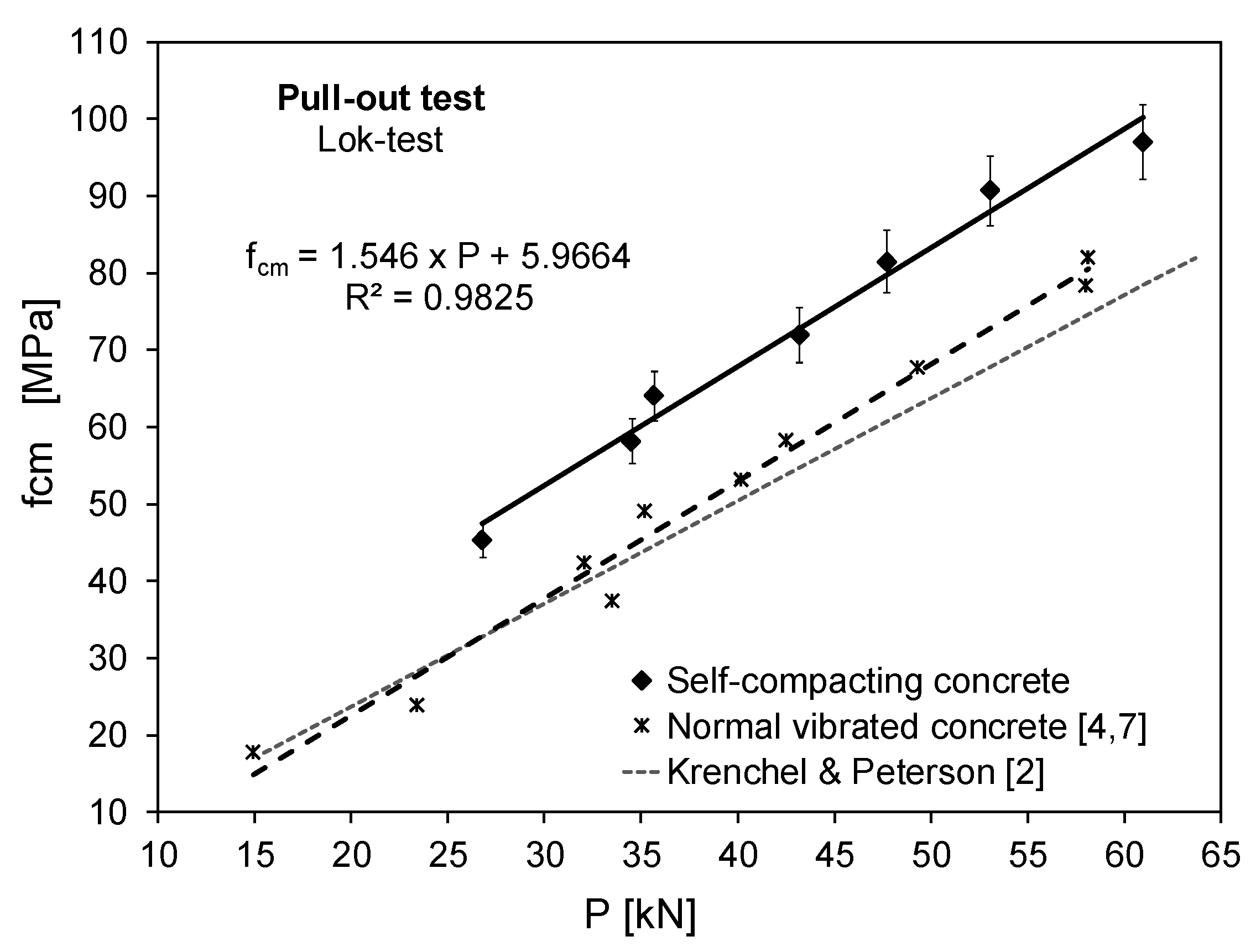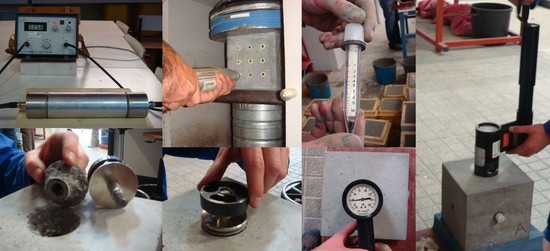1. Introduction
Since the middle of last century, concrete has undergone several developments and continued to show to be a remarkably versatile material for many applications in civil constructions. Nowadays, concrete still continues to be the preferential construction material to integrate many structural members for different kinds of constructions and infrastructures, such as buildings, bridges, dams, among others. In particular, many architectural structures have been and still are built using concrete as the key building material to achieve often complex spatial geometries. In this particular case, self-compacting concrete (SCC) has been widely used because it can be placed easily in complicated formwork and with high degree of reinforcement without the need of vibration. In addition, SCC produces a smooth and well-finished surface at the end of concreting, which is an important factor in many architectural structures with exposed concrete.
In the last years, maintenance and rehabilitation concerns have also covered concrete as a building material. Its preservation is essential to ensure the stability of the structure, so as not to impair its use nor jeopardize the safety of the users during the intended lifetime.
The need to ensure the quality of concrete structures, the verification of aging of older structures and the premature degradation of recent ones justify, because of the associated high costs, special attention to the study of maintenance and rehabilitation issues. Nowadays, if existent concrete structures show unacceptable deterioration, a correct assessment of the actual state of concrete is required to quantify the available safety margin. The effective concrete compressive strength is usually a key parameter that is required to perform this evaluation. Other situations that require an evaluation of concrete strength include the quality control of precast or in-situ concrete application, namely to decide when handling and transport precast units, to evaluate the concrete compressive strength for application of prestress, or to support the decision to remove formwork or temporary supports for structural elements.
The use of non-destructive tests (NDT) to evaluate concrete quality and to estimate its in-situ compressive strength has been well-known for some decades [
1,
2,
3,
4,
5]. Many of these tests and devices were initially developed for normal vibrated concrete (NVC) of normal strength range. However, in the nineties of the last century, some of these tests and devices were adapted for high-strength NVC [
6,
7,
8,
9]. Specific studies concerning the application of NDT in SCC are still scarce [
10]. The procedures to apply the most firmly established NDT methods can be found in the normative documents from different countries. However, it is important to mention that such procedures can present small differences between them and the selection of the most appropriate method should be decided previous to test, to avoid divergences when interpreting the results [
4,
5].
The range of available tests vary from the most economical, simple, and easy to use (e.g., surface hardness test, ultrasonic pulse velocity test, and pull-out test using Lok-test system), to the most complicated (e.g., pull-off test using Bond-test system with partial coring and pull-out test using CAPO-test system) and expensive ones (e.g., Windsor Probe Test System and Maturity meter). Careful selection of the types of tests to be combined in each situation is critical to achieve both accuracy of results and cost savings [
1,
3,
4]. When such tests are applied, it is necessary to evaluate the variables which can affect the test results and the correlations. Some tests are more sensitive and/or reliable than others, but all of them can differ in terms of the within-test variability and repeatability of test results [
10,
11,
12,
13].
In general, the interpretation and validation of NDT results should involve three distinct phases [
10]: processing of collected data, analysis of within-test variability, and quantitative evaluation of the property under analysis. Relevant information can be obtained by the analysis of within-test variability, by comparing the obtained results in a location with the typical one for the NDT method in use, either to provide a measure of the quality control or to detect abnormal circumstances in NDT application [
10]. A good planning of a research when inspecting a concrete structure should also include the procedures for data treatment and interpretation of in-situ test results prior to the inspection. When monitoring concrete compressive strength during construction, it is usually sufficient to compare test results with the limits established by trials made at the start of the contract, but in other complex situations, like in old structures, the prediction of the actual concrete compressive strength could be required for calculation design. Depending on the purpose of the research, either for estimation of the in-situ concrete compressive strength for conformity checking, either for design calculations, many questions concerning the conversion between the mean value of compressive strength and the characteristic value or the minimum in-situ design value, or either about the safety factor coefficient to apply, may lead to complex discussions, because of the basic differences between in-situ concrete and the standard test specimens upon which most specifications are based [
1,
4].
Most of the NDT give a measure of a property of concrete on the surface or near to the surface that can be related to concrete strength (surface hardness, resistance to penetration of a probe, pull-out force of a 25 mm ring placed at 25 mm depth, pull-off force to extract a cylindrical disk glued to the surface or near the surface to measure direct tensile strength, internal fracture test, among others). The obtained readings of NDT may be correlated with compressive strength experimentally. However, placing, compacting, and curing may turn the concrete in the surface zone unrepresentative of the concrete at deeper levels, and care should be taken to ensure that the correlations adopted are relevant to the circumstances of use. One of the NDT methods that does not cause any damages on concrete surface and can be used to evaluate the interior mass of concrete elements is the ultrasonic pulse velocity test. However, the ultrasonic pulse velocity in reinforced concrete is significantly affected by the presence of steel reinforcement, and this can impair significantly the results [
1,
3,
4]. It is worth mentioning that, because of its versatility, the ultrasonic pulse velocity test can also be used in rocks to evaluate its mechanical properties, e.g., for structural diagnosis of old rock masonry of historical heritage building [
14]. Likewise, the surface hardness test (type-L) can also be used to estimate the compressive strength in rocks for the same purpose.
The number and type of variables affecting the correlations with the concrete compressive strength may differ for each NDT method. Some correlations can include correction parameters to attend for some of these variables in order to broad the range of application of the test, while others are missing with respect to this. As examples, some of the referred variables that can affect the correlations are the following ones [
1,
3,
4]: differences in concrete mix proportions (quantity, nature, shape, and texture of aggregates; type and amount of cement; paste to aggregate ratio, water to cement ratio, among others); differences in moisture conditions (saturated or dry); type and size of the test specimens used to establish the correlation; surface carbonation (which changes the relationship between the superficial and inner concrete); the age of concrete and used curing type (in some methods the correlations are different for concrete with short ages compared to concrete over 28 days); differences in concrete surface finish (metal formwork may lead to differences in the surface layer when compared with wood formwork); the used equipment (similar equipment with the same technical reference may have different correlation); the used procedure (different procedures may lead to different results); different stress states in the tested element may affect the readings; the mass of the test specimen, among others.
When selecting the most appropriate method some factors are crucial, such as: the purpose of the testing, practical factor related to the nature and position of the concrete under evaluation, the availability and reliability of surface damage, size of member to be tested, the complexity and preparation of the operation, access requirements and test positions. In some circumstances, the selection of a NDT which is quicker to carry out and less damaging can be more useful to mapping areas of different quality in a structural member (without the need to use correlations with compressive strength) and to locate appropriate areas for testing by other methods, more destructive and usually more expensive, but more precise, including the extraction of a small number of cores.
For the majority of the NDT, it is recommended that a specific correlation is obtained for the type of concrete under investigation to achieve higher accuracy. However, there are some NDT, such as the pull-out test, for which the use of general correlations is allowed to estimate concrete compressive strength with reasonable accuracy for a wide range of concrete mixes of NVC [
15]. According to BS 1881-207:1992 [
15], even for the pull-out test, special correlations are required for lightweight concretes or other mixes with less common constituents. It could be the case of SCC, in which the mix proportions differ from NVC in order to achieve the required fresh properties.
From the aforementioned, it can be stated that the specificities of SCC when compared with NVC, namely higher cement paste dosage and smaller volume of coarse aggregates, smaller coarse aggregates, the absence of vibration, among others, are susceptible to affect the correlations with the concrete compressive strength. In this sense, the present study evaluates the applicability of some NDT to SCC in order to estimate the concrete compressive strength. Selected tests included the ultrasonic pulse velocity test (PUNDIT), the surface hardness test (Schmidt rebound hammer type N), the pull-out test (Lok-test), and the concrete maturity test (COMA-meter).
The tests used in this research work were selected based on its user-friendly characteristics. The ultrasonic pulse velocity test and the surface hardness test can be used either in new or old concrete, being easy to operate, do not produce damage on the concrete surface, results are immediately available, are of low cost and require only the maintenance of the equipment. These allow a more extensive analysis of structures covering a larger extension. The pull-out test (Lok-test) can be used only in new concrete, since the insert has to be placed in formwork prior to casting. However, Germann Instruments A/S have developed the CAPO-test system (Cut And Pull-Out) which allows to perform the pull-out test in old concrete. In this system, the capo-insert (25-mm diameter ring) is placed in hardened concrete at a depth of 25 mm by drilling a 18-mm central hole with a drill unit, using a diamond recess router to open an inside hole at 25 mm depth and an expansion unit to fully expand a 25-mm diameter ring inserted in the hole. The geometry and mechanism of fracture in CAPO-test system is similar to Lok-test system, allowing the use of the same correlations to compressive strength. Both systems measure the force by which a 25-mm disc or ring placed in a depth of 25 mm is pulled out of the concrete through a 55 mm inner diameter counterpressure placed on the testing surface. The concrete maturity test (COMA-meter) is the one that is exclusively used in fresh concrete because the capillary tube has to be placed just after casting.
The 95% confidence limits for the estimation of the concrete compressive strength will vary significantly according to the type of selected NDT and the reproducibility of the used correlations. The data actually available concerns only the NVC. In this context, it has been referred that even using correlations specifically developed for a given concrete and under well reproduced in-situ conditions, it is unlikely that the 95% confidence limits for the estimation of the concrete compressive strength are better than ± 20%, ± 25%, and ± 10% of the mean value, when using the ultrasonic pulse velocity test, surface hardness test, and pull-out test, respectively [
1,
15,
16,
17]. When using specifically developed correlations and under ideal laboratory conditions it is probable that this difference would be reduced to ± 10% and ± 15% from the estimated mean value for ultrasonic pulse velocity test and surface hardness test, respectively [
1,
16,
17]. Without specific correlations this difference could arise ± 50% for the ultrasonic pulse velocity test [
1,
16]. Even for the pull-out test, when using general correlations, such as those suggested by Lok-test and CAPO-test manufacturers, such interval would probably be widened to ± 20% of the mean value [
1,
15].

